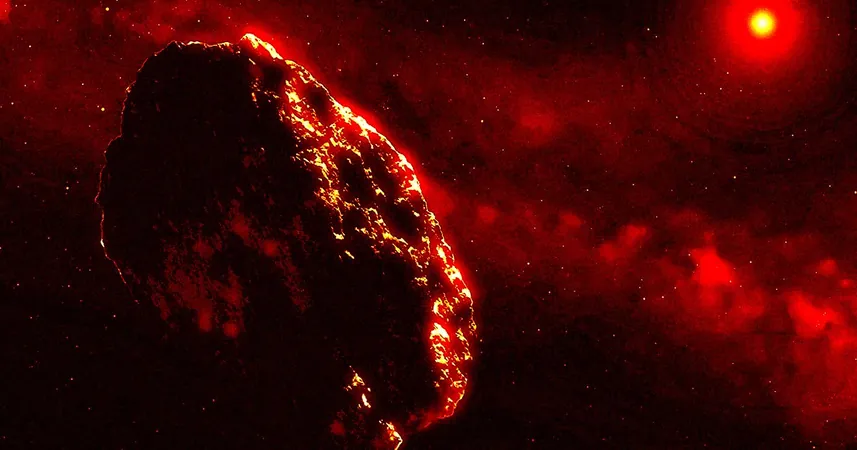
Earth's Mini Moon 2024 PT5 Says Goodbye: What You Need to Know About This Celestial Visitor!
2024-11-25
Author: Li
In a cosmic coincidence, Earth has recently bid farewell to a tiny "mini moon" that graced our planet for a brief period of two months. This 33-foot space rock, named 2024 PT5, was first detected by astronomers in August and navigated a unique horseshoe-shaped orbit around the Earth, showcasing the dynamic interplay between celestial bodies.
While it may sound like a headline from a science fiction novel, scientists speculate that 2024 PT5 might have its origins linked to our Moon. Researchers believe this mini moon could have been a fragment of the Moon itself, dislodged by an asteroid impact millions of years ago. This tantalizing thought adds an exciting twist to our understanding of the solar system's history.
The brief visit of 2024 PT5 posed no threat to Earth, maintaining a safe distance as it orbited our planet, reminding us of the vast number of such celestial rocks that inhabit our neighborhood. Federica Spoto, a Harvard asteroid dynamics researcher, highlighted the bustling nature of our surrounding space, indicating that the area near Earth is akin to a "busy highway" filled with transient objects.
Despite its intriguing status, this mini moon never completed a full orbit around Earth. Carlos de la Fuente Marcos, a professor from Universidad Complutense de Madrid, aptly described such objects as "window shoppers," as they never fully settle into a stable orbit like true moons. His research also cited a couple of other known temporary captures, specifically 2006 RH120 and 2020 CD3, which have been briefly bound to Earth's gravitational pull.
Notably, 2024 PT5 was never visible to amateur astronomers, hiding from all but the most professional of telescopes. However, NASA is gearing up for a closer look when the space rock returns for another fleeting visit in January. Equipped with advanced radar technology, the agency aims to track its path and learn more about this intriguing object, giving scientists valuable insights into its composition and origin.
Don't miss out on this cosmic moment! Following its January appearance, 2024 PT5 won’t be making waves around Earth again for another 30 years! As we continue to explore our universe, each encounter with such near-Earth objects enhances our understanding of the celestial landscape surrounding us. Stay tuned for more updates on this captivating mini moon and other astronomical discoveries!



 Brasil (PT)
Brasil (PT)
 Canada (EN)
Canada (EN)
 Chile (ES)
Chile (ES)
 España (ES)
España (ES)
 France (FR)
France (FR)
 Hong Kong (EN)
Hong Kong (EN)
 Italia (IT)
Italia (IT)
 日本 (JA)
日本 (JA)
 Magyarország (HU)
Magyarország (HU)
 Norge (NO)
Norge (NO)
 Polska (PL)
Polska (PL)
 Schweiz (DE)
Schweiz (DE)
 Singapore (EN)
Singapore (EN)
 Sverige (SV)
Sverige (SV)
 Suomi (FI)
Suomi (FI)
 Türkiye (TR)
Türkiye (TR)